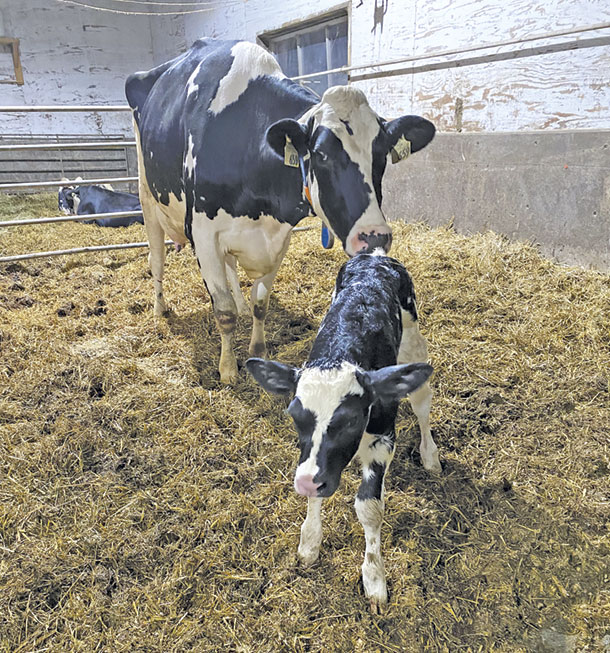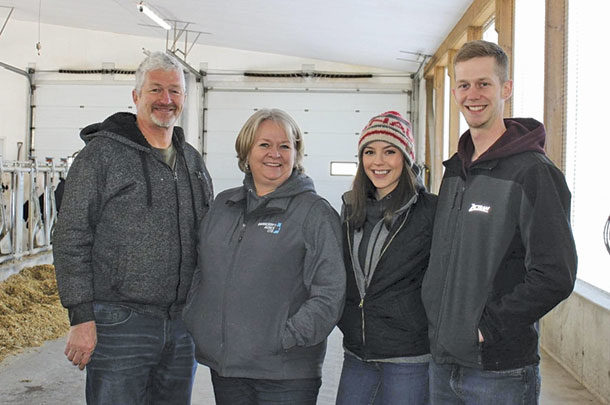Using boluses, the Harrops have been able to monitor and detect elevated temperatures and decreases in water intake in their animals, helping them detect and treat illnesses sooner and more effectively.
The Harrops were introduced to the technology while Ian was serving on the board of the Agricultural Credit Corporation (ACC) based out of Guelph, Ontario. A company – Cattle Scan – approached the board looking for grant funding and farms in the area willing to test out their boluses. Janet, who has a background in nursing, was intrigued by the technology and decided to trial it at Harrcroft Acres. “We saw that, given the cost of the boluses and the real-time information you could garner, there was management and animal health value,” she says.

The Harrops have been using the boluses since April 2020 and, Janet says, they have been an effective management tool. “We have found that the temperature monitoring for elevated temperatures has been really valuable in that we have found animals that have started to develop a temperature, and we have been able to check them out – not that we treat all animals that have an elevated temperature … but we use it as a management tool, and we check these animals to see their health status,” Janet says. “We have found that several of the animals that have had elevated temperatures have had an underlying infection that wasn’t really presenting itself clinically yet,” she says.
Once an elevated temperature is detected in one of their cows through the boluses, the Harrops confirm the temperature through a rectal temperature check. If the temperature is indeed high, their next step is to check for mastitis using a California Mastitis Test (CMT). They also check each of the cow’s quarters. Janet says if the animal is only shedding a few clots and actively fighting the mastitis infection, with no signs of warm or enlarged quarters, they are monitored closely for the next 24 hours. However, if they find an active mastitis case with a warm or enlarged quarter, the cow is given an intramammary antibiotic to treat the infection.
Janet estimates they have been able to detect illnesses about 24 hours earlier than if they had been relying only on signs of clinical symptoms. She says this has led to cows being treated sooner and less often. “If we can treat them early, their recovery is much faster and the amount of treatment required is much less,” Janet says.
To complement the boluses, the Harrops also use an activity system, which monitors any increases or decreases in a cow’s activity. When an elevated temperature is detected by the boluses, Janet makes a point of checking the activity system to see if a corresponding decrease in activity has also been detected, as she says this would indicate the cow is not feeling well.
The Harrops also observe their cows’ water intake using the boluses to address management and grouping concerns. “We were noticing some decrease in water intake because of some bullying that was going on with some of the animals,” Janet says. Once the cases of bullying were observed, they made some changes to cow groups. She says the technology helped them determine that the animals identified as having decreased water intake were the same animals experiencing bullying.
Although she says it is hard to quantify the economic benefits of the telemetry cattle monitoring system, Janet believes they have caught about eight to 10 cases of mastitis earlier than if they had not been using the system. She says because of this, the affected cows were all able to recover from their ailments. As a result, Janet says weighing their decrease in animal losses due to mastitis, the cost of the system is quickly covered.
Janet says the system is straightforward, but the fact that it is not integrated with their other systems can sometimes be an inconvenience. “It’s one other place to look,” she says. Janet says her interest in numbers and data reminds her to check the system a few times a day, but says this may be a struggle for other producers who are not as data-driven.
To see the greatest benefit from the boluses, Janet says the system needs to be monitored daily and work as part of a larger management plan. She says, “You really have to use it as a management tool to be able to help you monitor animal health; you shouldn’t use it as a stand-alone program.” ![]()
PHOTO 1: Ian, Janet, Jessie and Ryan Harrop (from left to right) use boluses to monitor cow temperatures as well as their cows’ water intake to treat diseases sooner.
PHOTO 2: Janet Harrop estimates Harrcroft Acres Ltd. has saved eight to 10 cows between April and November 2020 using their telemetry cattle monitoring system. Photos provided by Janet Harrop.

-
Emma Ohirko
- Editor
- Progressive Dairy
- Email Emma Ohirko










